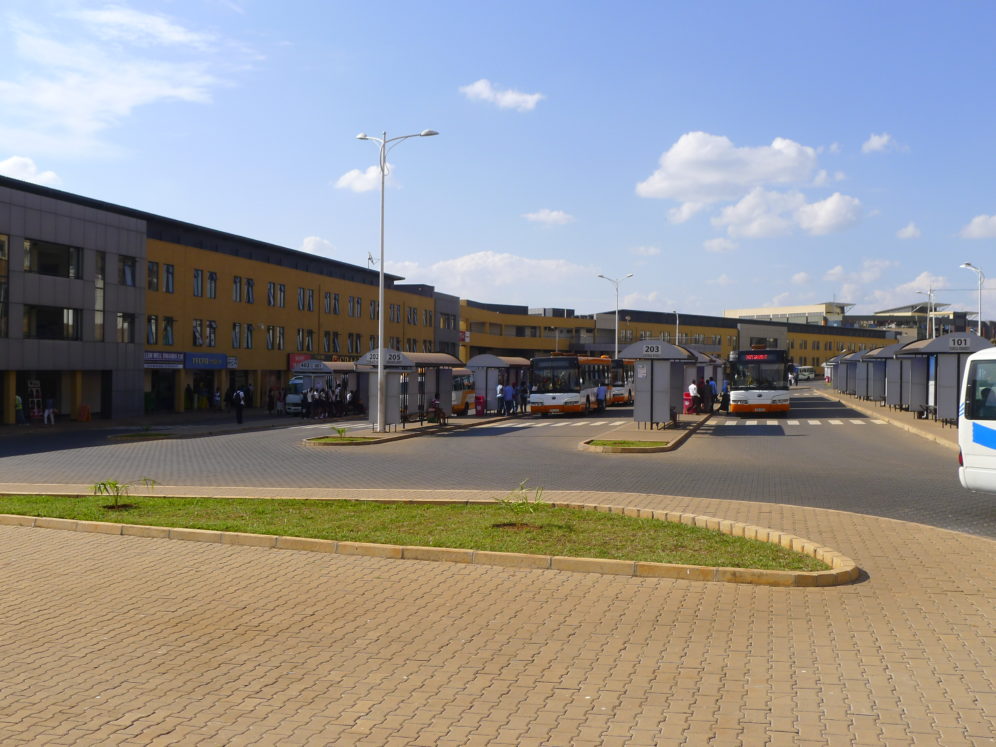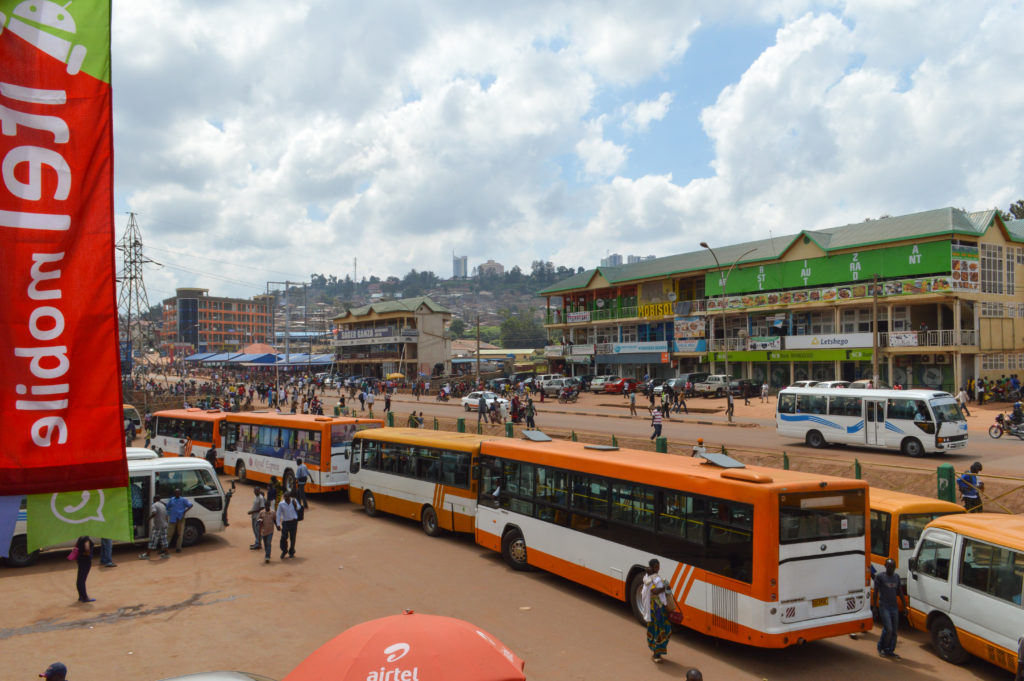
April 08, 2021
Bus reforms in Kigali
Early this year, the government of Rwanda announced a subsidy of Rwf29.3 billion to mitigate the effects of the COVID-19 pandemic on the transport sector. Due to the mandated reduction in capacity, bus companies were experiencing economic losses that would have led to poor service quality and with time a total shut down of the public transport system.
The city of Kigali recognizes that even without the pandemic, an efficient and quality public transport system is an integral part of the economy. The city is planning an introduction of second generation public transport contracts that aim to increase ridership, reduce pollution, and improve passenger satisfaction through improved route planning, increased capacity, strict scheduling with a proposed waiting time of 5-10 minutes and alignment of fares with distance travelled.
Kigali has made substantial progress in public transport reform since 2008. Reforms were initiated by the government of Rwanda and the mayor of Kigali as a means to respond to the city’s growing population and the need for better coordination of public transport services.The available minibuses, known as Twegerane, had a carrying capacity of 18 passengers and were old and dilapidated. The minibuses were run by individuals, and owners could decide at what time and in which routes to operate. Minibuses were often overcrowded, and at times the rush led to chaos at bus stops and terminals. Women, children, disabled people, and elderly could not adequately access public transport. The minibuses were grouped into an association, the Association des Transports en Commun (ATRACO), in a bid to improve coordination. This however proved ineffective, and service remained inadequate. The government requested the intercity and upcountry public transport operators, Office National de Transport en Commun (ONATROCOM) buses, and other private bus services such as Volcano Express and Tebuka to support the city’s public transport operations during peak hours. In order to address the frequent chaotic scenes witnessed at bus stations and stops, the government also introduced a queueing system. Insecurity in bus stations abated and vulnerable groups were able to access public transport more easily. This culture of waiting queues is still practiced today.

In 2011, the Ministry of Infrastructure initiated the development of the first public transport policy and strategy for Rwanda. A committee to draft the policy was composed of technical staff from the Ministry of Infrastructure (MININFRA), the City of Kigali, and the Rwanda Utilities Regulatory Authority (RURA). The policy was approved by the cabinet in October 2012 and became the guiding document for the formalisation of public transport in the city of Kigali. It was implemented actively by the City of Kigali Council and RURA.The public transport formalisation process was led by the City of Kigali through the mayor’s office, coordinated by MININFRA, and overseen by the Office of the Prime Minister. A steering committee comprised of government institutions and private sector operators was formed to plan and design solutions to address public transport challenges and expedite the formalisation process.The reforms included forming cooperatives and companies in place of the former associations.
However, implementation of the new guidelines faced strong resistance from minibus owners, since they did not understand how they would benefit from operating within cooperatives. The public transport steering committee played a major role in convincing them to form cooperatives and companies. Bus owners could get credit and loans from banks and would have the ability to bid for government tenders for public transport operations. The cooperatives formed by the minibus owners later united to form the Rwanda Federation of Transport Cooperatives (RFTC), currently the largest bus operator in the City of Kigali. Other individual minibus owners formed companies such as Royal Express and the Kigali Bus Service (KBS). Minibus owners under RTFC have equal shares and earn profits based on equity. Royal Express and KBS operate as companies with individual owners run by appointed management teams.

Through a competitive tendering process, RFTC, KBS, and Royal Express won tenders to operate the Kigali public transport system. The process took approximately six months and the five-year public transport contracts were signed between RURA and the bus operators in August 2013. The government of Rwanda spearheaded the reforms by helping cooperatives build capacity by training cooperative members. Some of the drivers and conductors joined the revamped modern system. They received regular training and were offered licenses and certificates of good conduct. Importation taxes on the high capacity buses were waived and the government facilitated access to loans for the companies. Large capacity buses tended to operate on major trunk routes while minibuses operated on feeder routes. Over time, the smaller 18-seat minibuses were phased out entirely.

The quality of public transport improved due to the increased routine inspections by the steering committee. Smart card payment technology was introduced on a pilot basis on designated routes in 2014, and officially replaced conductors in 2015. Due to the increased profits and the improved operations, the initial resistance slowly faded over time. Drivers were among the major beneficiaries of the revamped system. Prior to the reforms, drivers did not have salaried pay. Minibus owners would set minimum returns and the drivers’ wage would then depend on the remaining balance.
Under the new reforms, these working conditions have improved and drivers are offered salaried contracts from RWF 110,000 to 180,000 and universal medical insurance. The working hours were also drastically reduced. Each bus is expected to have two drivers, each working fifteen days a month. A driver typically works for eighteen hours each day, every other day. Apart from having stable jobs, these drivers and conductors also have access to bank loans from the RTFC microfinance and additional job opportunities in stations, bus depots, and garages owned by RTFC.
Rwanda is currently working on the second phase of the public transport reforms, which will facilitate the implementation of the second generation contracts. The government is reviewing the current net cost contracting model where operators receive all fare revenue and pay various license fees to the government and instead implement gross cost contracts where government payments to the operators would be based on a fixed payment per bus-kilometre. The per-km amount would be revised annually according to changes in fuel prices, inflation, and other factors. The government will then be able to monitor route efficiency and service quality since profitability of a route will no longer be tied to the route’s physical location or the level of passenger demand. Costs for bus operations would be clearly outlined, making it easier for the government to determine the gap between fare revenue and operating costs and make decisions about whether to contribute subsidies to increase service frequencies on particular routes.The government would also have the ability to set fare levels without entering a negotiation with the bus operators. This is because the operators would receive their km payments regardless of the user fare levels.
Other reforms include an expansion of the bus fleet by the contracted bus companies to cater for latent demand; provision of dedicated infrastructure to ease the movement of public transport vehicles; and restriction of circulation of motorcycle taxis along major public transport corridors.
